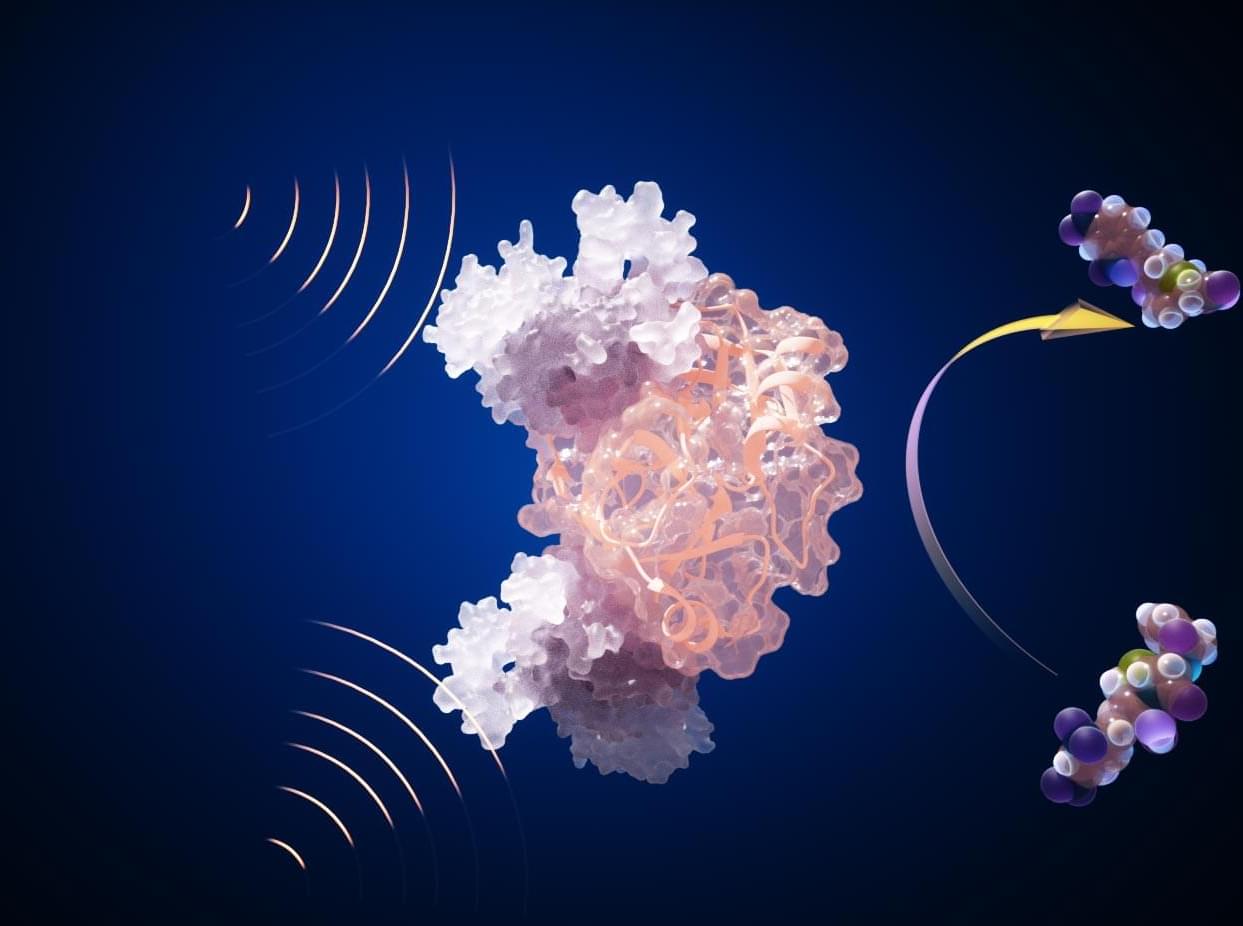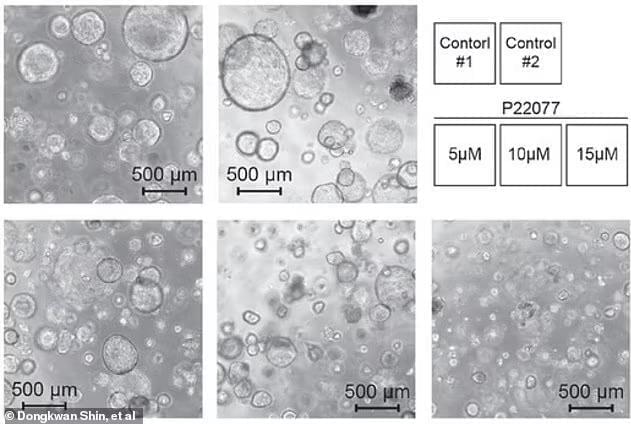Despite the energy innovations of artificial intelligence newcomer DeepSeek’s models, AI power requirements as a whole are predicted to rise.



This allows them to see how bacteria activate different genes in response to their environment, offering insights into microbial behavior, antibiotic resistance, and infection strategies.
How Bacteria Organize Their Activities
How do bacteria — whether beneficial ones in our bodies or harmful disease-causing strains — coordinate their activities? A recent study has provided new insights by combining advanced genomic-scale microscopy with an innovative technique to track which genes bacteria activate in different conditions and environments. Published recently in the journal Science, this breakthrough is set to advance bacterial research significantly.

Enter laser-plasma accelerators (LPAs). LPAs use high-intensity lasers to strike a target, generating charged particle beams that reach comparable speeds to those produced using traditional accelerators – but in a fraction of the distance. Scientists are exploring LPAs as a compact, cost-effective way to generate proton beams, but several technical challenges have hindered their progress.
One challenge arises from the high-intensity laser, which destroys the targets after each pulse, requiring a new target for every shot. Another issue is the beam divergence – proton beams produced by LPAs typically spread out like a floodlight rather than maintaining a narrow focus. Both the need for target replacement and the beam divergence significantly reduce the efficiency of LPA systems.
In this recent study, researchers made an unexpected breakthrough, simultaneously resolving multiple problems although they had only aimed to address one.

QUT researchers created a biosensor using engineered proteins to detect and extract rare earth elements, offering a potential solution to growing demand and environmental challenges.
QUT synthetic biologists have developed a prototype for an innovative biosensor capable of detecting rare earth elements, with the potential for modification to suit various other applications.
Lanthanides (Lns) are essential elements used in electronics, electric motors, and batteries. However, current extraction methods are costly, environmentally damaging, and unable to meet the growing demand.

In a major milestone for particle physics, scientists at CERN’s Large Hadron Collider (LHC) have successfully observed top quarks—one of the most elusive and short-lived fundamental particles—being produced in a laboratory setting. This historic discovery sheds light on the nature of matter and offers new insights into the early Universe, marking a turning point in our understanding of subatomic particles.
Quarks are the fundamental building blocks of protons and neutrons, which in turn make up the atoms forming all matter in the Universe. There are six known types of quarks: up, down, charm, strange, top, and bottom. Among these, the top quark stands out due to its heavy mass and extreme instability.
Unlike protons or neutrons, which persist indefinitely under normal conditions, the top quark decays almost instantly, with a lifetime of just 5×10^−25 seconds. This fleeting existence has made direct observation challenging, making the latest results from the LHC a remarkable breakthrough in experimental physics.

They may look like beefed up Roombas, but the new 535 and AWD 580L EPOS robotic lawn mowers from Husqvarna leverage the brand’s decades of outdoor power products expertise to deliver commercial-grade capability in an innovative package.
Husqvarna dropped the two new commercial robot lawnmowers at the GCSAA Conference and Trade Show in San Diego this weekend with claims that the new 580L EPOS model, specifically, “furthers Husqvarna’s commitment to providing autonomous solutions and revolutionizing turf management for golf courses, sports fields, and facility maintenance.”
If you’re wondering about that “EPOS” acronym, it stands for Exact Positioning Operating System. It’s a Husqvarna-developed, satellite-based positioning system that enables the robot mowers to work within virtual boundaries instead of relying on physical boundary wires like other (significantly less expensive) models.


Researchers at Tohoku University have achieved a significant advancement in opto-magnetic technology, observing an opto-magnetic torque approximately five times more efficient than in conventional magnets. This breakthrough, led by Koki Nukui, Assistant Professor Satoshi Iihama, and Professor Shigemi Mizukami, has far-reaching implications for the development of light-based spin memory and storage technologies.
Opto-magnetic torque is a method which can generate force on magnets. This can be used to change the direction of magnets by light more efficiently. By creating alloy nanofilms with up to 70% platinum dissolved in cobalt, the team discovered that the unique relativistic quantum mechanical effects of platinum significantly boost the magnetic torque.
The study revealed that the enhancement of opto-magnetic torque was attributed to the electron orbital angular momentum generated by circularly polarized light and relativistic quantum mechanical effects. The findings are published in Physical Review Letters.

The concept of computational consciousness and its potential impact on humanity is a topic of ongoing debate and speculation. While Artificial Intelligence (AI) has made significant advancements in recent years, we have not yet achieved a true computational consciousness capable of replicating the complexities of the human mind.
AI technologies are becoming increasingly sophisticated, performing tasks that were once exclusive to human intelligence. However, fundamental differences remain between AI and human consciousness. Human cognition is not purely computational; it encompasses emotions, subjective experiences, self-awareness, and other dimensions that machines have yet to replicate.
The rise of advanced AI systems will undoubtedly transform society, reshaping how we work, communicate, and interact with the digital world. AI enhances human capabilities, offering powerful tools for solving complex problems across diverse fields, from scientific research to healthcare. However, the ethical implications and potential risks associated with AI development must be carefully considered. Responsible AI deployment, emphasizing fairness, transparency, and accountability, is crucial.
In this evolving landscape, ETER9 introduces an avant-garde and experimental approach to AI-driven social networking. It redefines digital presence by allowing users to engage with AI entities known as ‘noids’ — autonomous digital counterparts designed to extend human presence beyond time and availability. Unlike traditional virtual assistants, noids act as independent extensions of their users, continuously learning from interactions to replicate communication styles and behaviors. These AI-driven entities engage with others, generate content, and maintain a user’s online presence, ensuring a persistent digital identity.
ETER9’s noids are not passive simulations; they dynamically evolve, fostering meaningful interactions and expanding the boundaries of virtual existence. Through advanced machine learning algorithms, they analyze user input, adapt to personal preferences, and refine their responses over time, creating an AI representation that closely mirrors its human counterpart. This unique integration of AI and social networking enables users to sustain an active online presence, even when they are not physically engaged.
The advent of autonomous digital counterparts in platforms like ETER9 raises profound questions about identity and authenticity in the digital age. While noids do not possess true consciousness, they provide a novel way for individuals to explore their own thoughts, behaviors, and social interactions. Acting as digital mirrors, they offer insights that encourage self-reflection and deeper understanding of one’s digital footprint.
As this frontier advances, it is essential to approach the development and interaction with digital counterparts thoughtfully. Issues such as privacy, data security, and ethical AI usage must be at the forefront. ETER9 is committed to ensuring user privacy and maintaining high ethical standards in the creation and functionality of its noids.
ETER9’s vision represents a paradigm shift in human-AI relationships. By bridging the gap between physical and virtual existence, it provides new avenues for creativity, collaboration, and self-expression. As we continue to explore the potential of AI-driven digital counterparts, it is crucial to embrace these innovations with mindful intent, recognizing that while AI can enhance and extend our digital presence, it is our humanity that remains the core of our existence.
As ETER9 pushes the boundaries of AI and virtual presence, one question lingers:
— Could these autonomous digital counterparts unlock deeper insights into human consciousness and the nature of our identity in the digital era?
© 2025 __Ӈ__
Mission Hospital is the first in California and among a select few in the world to offer, a revolutionary, noninvasive treatment for malignant and benign liver tumors. The procedure works by using high-energy ultrasound waves that convert to sonic beams and destroy liver tumors without a single incision.
Because the innovative procedure is noninvasive, it minimizes the risk of infection, bleeding and other complications. can be used to effectively treat liver tumors in patients who are not candidates for open surgery or have been told their liver tumor is inoperable. The procedure is compatible with chemotherapy and/or radiation therapy and can also be used to treat metastatic cancer that has spread to the liver.
During the procedure, targeted ultrasound waves form bubble clouds that implode and collapse rapidly, destroying only tumor cells. After tumors are liquefied by the sonic beam, only tiny molecules remain in the body. These microscopic fragments are too small to allow the cancer to spread and regrow.